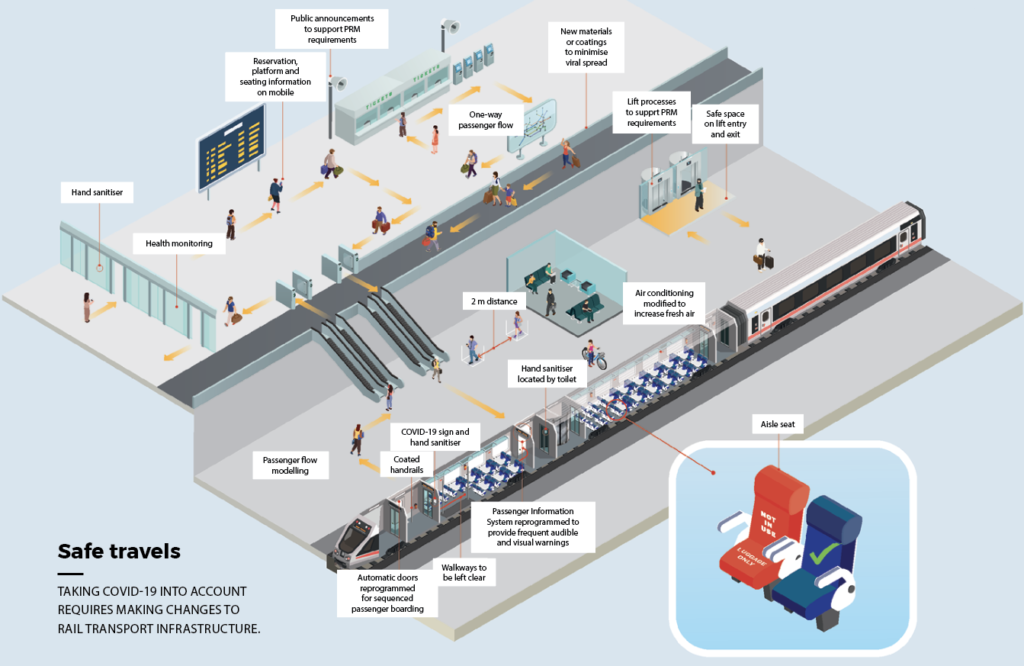The COVID-19 pandemic has shut down cities worldwide. To open them back up, engineers are modelling life after the virus.
In 2012, Paris-based art duo Simon Brodbeck and Lucie de Barbaut created a series of eerie photographs for a project they called Silent World.
The photos featured scenes of megacities — Paris, New York, Beijing — edited to remove almost all trace of people. At the time, the images appeared otherworldly: eerie visions of bustling metropolises stripped of life.
In 2020 though, no digital trickery is required to create shots like these. The coronavirus pandemic has closed down life all over the world, and photographers have been able to capture unsettling shots of vacant CBDs just by stepping outside.
Now, as nations bring the virus under control, they are considering how to safely and responsibly refill these vistas with people.
Cameron MacDonald, Technical Director at SNC-Lavalin Atkins, is thinking about the transport aspect of that question in particular. Just like Brodbeck and Barbaut, he’s drawing on some digital assistance for the task.
Empty trains
“Atkins has done a great deal of work over the last probably four months, looking at COVID-19 and transport and how we should be re-imagining transport and mobility for a sustainable economic recovery,” MacDonald told create.
A transport planner and civil engineer, the Melbourne-based MacDonald uses digital modelling software like Bentley’s pedestrian movement simulator Legion to figure out how Victoria’s transportation systems can be ready for a post-COVID-19 world.
“We are working with the transport operators, in terms of helping them understand what the capacity impacts are of the social distancing requirements,” he said.
“Up until now that hasn’t really been an issue, because lockdown in Melbourne has meant that public transport is running at only 10 or 20 per cent capacity.”
“But there will come a time when the new reduced capacity of the transport networks, due to social distancing, starts to equate to the demand for the public transport services,” he continued.
“And that’s when things could get interesting, because then you’re facing a capacity constraint and the operators, and the wider transport system, will need to deal with any overflow in a different way.”
The software MacDonald uses to think about these problems does not have COVID-19 considerations built into it, though he expects that if a vaccine does not arrive in the near future, it will begin to incorporate such a feature.
“But until then, the modelling still can serve a purpose,” he explained. “You can fix within the model the way that people behave, in terms of the distancing from others.”
COVID-19 computations
MacDonald went into more detail in July at a digital briefing conducted by Bentley.
“Distancing can be viewed as an overcrowding in disguise, where, in effect, much larger entities require more space and more time to be processed properly,” he said at the time.
“The model can then usefully simulate the use of waiting, circulation and queueing zones, with entities responding directly to visual cues for social distancing.”
That does require passengers to alter their behaviour, but the response to the pandemic has already shown how much people are willing to adjust to keep safe.
“As human beings, we’re not innately programmed to socially distance; however, people are clearly altering their behaviours in public spaces due to the current threat,” MacDonald said.
“We’ve outlined a range of measures for consideration. These include hand sanitiser provision, health monitoring through thermal imaging, one-way circulatory flows to minimise face-to-face contact, as well as seat allocation as a means of social distancing.”
And these measures — and the modelling used to determine how to implement them — does not have to be restricted to transport networks.
“I’m thinking in particular about sporting events and the AFL, because the AFL is always keen to get as many people within their stadiums as possible, but at the same time, they need to be aware of the prevailing social distancing protocols,” MacDonald said.
“So they may come to us, for example, and say, ‘Listen, how many people can we fit into this stadium while everybody is obeying the social distancing requirements?’.”
Change of lifestyle
One consideration affecting MacDonald’s work is the long-term effects of the COVID-19 pandemic. What will it mean for the way people commute to and from work? Will people still travel to offices? Will peak-hour traffic still exist as a concept?
“A lot of what we do is designing transport infrastructure for passenger comfort,” MacDonald explained.
“In the example of a railway station, we size the circulation requirements for the peak-hour usage of that facility. So we don’t worry too much about what’s happening in the off-peak.”
But if peak-hour demand falls or moves outside of the traditional commuter peak — or if social distancing requirements change the capacity of a station — MacDonald needs to approach the problem in new ways. A Monash University study about the future of commuting has given him some guidance.
“We can expect only 70 or 80 per cent of commuters to return to commuting the way they did previously,” he said. “Conceivably we won’t need to size our stations to the same extent.”
And longer-term patterns of urban design could further shape the way transport infrastructure is created.
“We might also see a change in travel patterns in terms of trip destination, with a redistribution of activities away from the CBD,” MacDonald said.
“If these behaviours are changing, then we need to understand how they’re changing to enable us to design these facilities in the way they’re going to be used going forward.”
This article first appeared as “Back on track” in the October 2020 issue of create magazine.
